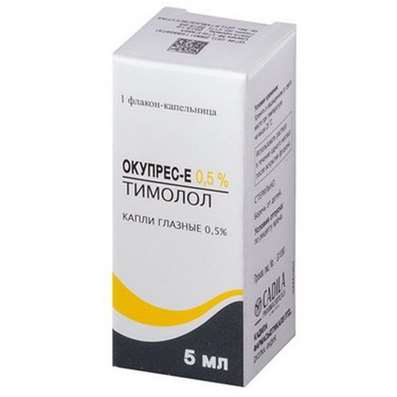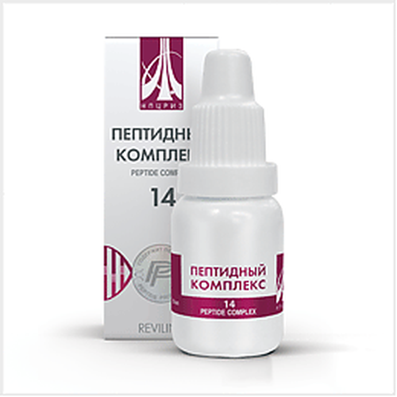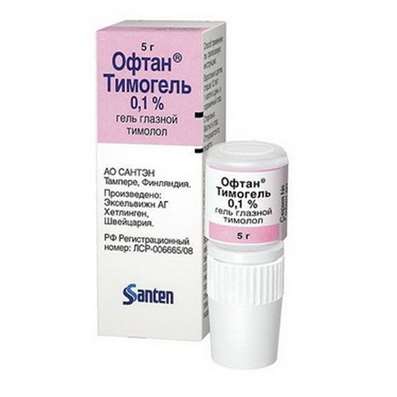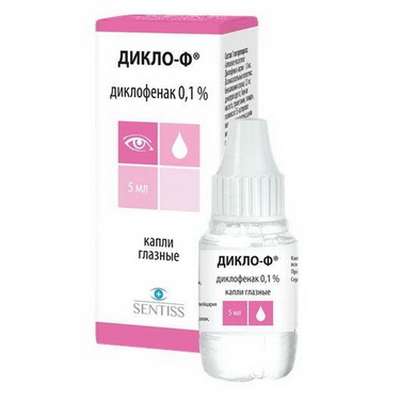Instruction for use: Rispolept
I want this, give me price
Dosage form: tablets
Active substance: Risperidone*
ATX
N05AX08 Risperidone
Pharmacological group:
Neuroleptics
The nosological classification (ICD-10)
F03 Dementia, unspecified: Degenerative dementia; Dementia; Dementia presenilnaya; Dementia senile; Primary degenerative dementia; Senile dementia; Senile dementia of the Alzheimer's type; Senile dementia; Syndromes of dementia; Dementia; Mixed Dementia; Mixed forms of dementia; Senile dementia; Senile Dementia
F06.3 Organic mood disorders [affective]: Secondary affective symptoms; Organic depression; Affective disorders; Depressed mood with elements of anxiety
F20 Schizophrenia: Schizophrenic Conditions; An exacerbation of schizophrenia; Schizophrenia; Chronic schizophrenia; Dementia praecox; Bleuler's disease; Psychotic discordant; Dementia early; The febrile form of schizophrenia; Chronic schizophrenic disorder; Psychosis of the schizophrenic type; Acute form of schizophrenia; Acute schizophrenic disorder; Cerebral Organic Insufficiency in Schizophrenia; Acute attack of schizophrenia; Schizophrenic psychosis; Acute schizophrenia; Sluggish schizophrenia; Sluggish schizophrenia with apathoabulic disorders; Acute stage of schizophrenia with agitation
F22.0 Delusional Disorder: Delirium; Acute paranoid state; Othello Syndrome; Paranoid-hallucinatory state; Paranoid state; Paranoid delirium; paranoid psychosis; Paranoid delirium; Attack of delirium; The attack of polymorphic delirium; Psychotic disorder with a predominance of hallucinatory-paranoid symptoms and disorders of thinking; Anxious-delirious component; Anxiety and Paranoid Syndrome
F30 Manic episode: Manic-depressive disorder; Manic agitation; Manic state; Manic conditions; Manic condition; Manic syndrome; Acute manic syndrome
F31 Bipolar affective disorder: Mood disorders bipolar; Affective bipolar psychosis; Manic-melancholic psychosis; Intermittent psychosis; Circular psychosis; Cyclophrenia; Bipolar disorders; Bipolar disorders; Bipolar psychosis; Affective insanity; Manic-depressive syndrome; Psycho Manic-Depressive; Depressive episode of bipolar disorder
F39 Mood disturbance [affective], unspecified: Affective disorder; Affective disorders; Dysphoric states; Dysphoric disorder; Psychoemotional Disorder; Affective disorders; Emotional-labile upset; Cyclotimic personality
F84.0 Childhood Autism: Autism; Autism children; Autism early childhood; Kanner's syndrome; Early Childhood Autism
F91 Behavioral disorders: Juvenile and other behavioral disorders; Destructive behavior; Violation of behavior; Behavior Disorders; Mixed behavioral disorders; Behavioral Disorder; Behavioral disorder in adolescents with 15 years of age and adults; Violations in behavior; Behavioral disorders in childhood; Behavioral disorders in old age; Behavioral disorders in children; Behavioral disorders in children
F91.9 Conduct disorder, unspecified: Reactions of negativity; The reaction of stubbornness; Impulsive behavior; Dangerous impulsive behavior; Behavioral Reactions Disorders
F99 Unspecified mental disorders: Psychosis in children; Mental disturbance; Violation of mental activity; Psychoses of childhood
R45.1 Anxiety and agitation: Agitation; Anxiety; Explosive excitability; Internal stimulation; Excitability; Excitation; Excitation acute; Psychomotor agitation; Hyperexcitability; Motor excitement; Cessation of psychomotor agitation; Nervous excitement; Restlessness; Night trouble; Acute stage of schizophrenia with agitation; Acute mental agitation; Paroxysm of excitation; Overexcitation; Increased excitability; Increased nervous excitability; Increased emotional and cardiac excitability; Increased agitation; Mental arousal; Psychomotor agitation; Psychomotor agitation in psychoses; Psychomotor agitation of an epileptic nature; Psychomotor paroxysm; Psychomotor fit; Symptoms of Excitation; Symptoms of psychomotor agitation; The state of agitation; A state of anxiety; Excitation status; A state of heightened concern; The state of psychomotor agitation; Conditions of anxiety; Excitation conditions; The state of excitement in somatic diseases; Excitation level; Feelings of anxiety; Emotional arousal
R45.4 Irritability and anger: Neurosis with increased irritability; Outbreaks of anger; Anger; Resentment; Increased irritability; Increased irritability of the nervous system; Irritability; Irritability with neuroses; Irritability in psychopathic disorders; Symptoms of irritability; Dysphoria
R45.6 Physical aggressiveness: Aggressiveness; Aggressive states; Aggression; Aggressive behavior; Autoaggression
R45.8 Other symptoms and signs relating to the emotional state: State of confusion; Violation of the emotional-volitional sphere; Emotional disorders; Yearning; Lack of emotionality and avoidance of communication; Sense of anxiety; Autoaggression; Violations of the emotional-volitional sphere; Affective stupidity; Depressed mood with elements of anxiety
Composition
Solution for ingestion 1 ml
active substance:
risperidone 1 mg
excipients: tartaric acid; benzoic acid; sodium hydroxide; purified water
Pharmachologic effect
Pharmacological action - antipsychotic.
Dosing and Administration
Inside, regardless of food intake.
Schizophrenia
Adults. Rispolept® can be given 1 or 2 times a day. The initial dose of Rispolept ® is 2 mg / day. On the second day, the dose should be increased to 4 mg / day. From this moment the dose can either be kept at the same level, or individually adjusted if necessary. Usually the optimal dose is 4-6 mg / day. In some cases, a slower dose increase and lower initial and maintenance doses may be justified.
Doses above 10 mg / day do not show a higher efficacy compared with smaller doses and may cause extrapyramidal symptoms. Due to the fact that safety of doses above 16 mg / day has not been studied, doses above this level can not be used.
To therapy with Rispolept®, benzodiazepines can be added if an additional sedative effect is required.
Elderly patients. Recommended initial dose of 0.5 mg per reception 2 times a day. The dose can be individually increased by 0.5 mg twice a day to 1-2 mg twice a day.
Adolescents are over 13 years old. An initial dose of 0.5 mg is recommended for taking 1 time per day in the morning or evening. If necessary, the dose can be increased at least after 24 hours by 0.5-1 mg per day to a recommended dose of 3 mg / day with good tolerability. Safety of doses above 6 mg / day has not been studied.
Patients who have sustained drowsiness, it is recommended to take half the daily dose 2 times a day.
Information on the use of the drug for the treatment of schizophrenia in children under 13 years is absent.
Behavioral disorders in patients with dementia
The initial dose is recommended - 0.25 mg per reception 2 times a day. If necessary, the dose can be individually increased by 0.25 mg twice a day, not more often than every other day. For most patients, the optimal dose is 0.5 mg 2 times a day. However, some patients receive 1 mg twice daily.
When the optimal dose is reached, the drug may be recommended once a day.
Bipolar disorders in mania
Adults. The recommended initial dose of the drug is 2 or 3 mg / day at a time. If necessary, this dose can be increased at least 24 hours per 1 mg / day. For most patients, the optimal dose is 1-6 mg / day.
Teenagers and children over 10 years old. An initial dose of 0.5 mg is recommended for taking 1 time per day in the morning or evening. If necessary, the dose can be increased at least after 24 hours by 0.5-1 mg / day to a recommended dose of 2.5 mg / day with good tolerability. For most patients, the optimal dose is 0.5-6 mg / day.
Safety of doses above 6 mg / day has not been studied.
Patients who have sustained drowsiness, it is recommended to take half the daily dose 2 times a day.
Information on the use of the drug for the treatment of bipolar disorders in children under 10 years is absent.
Behavioral disorders
Patients with a body weight of 50 kg or more. The recommended initial dose of the drug is 0.5 mg once a day. If necessary, this dose can be increased by 0.5 mg / day not more often than every other day. For most patients, the optimal dose is a dose of 1 mg / day. However, for some patients it is preferable to take 0.5 mg / day, while some require an increase in the dose to 1.5 mg / day.
Patients weighing less than 50 kg. The recommended initial dose of the drug is 0.25 mg once a day. If necessary, this dose can be increased by 0.25 mg / day not more often than every other day. For most patients, the optimal dose is 0.5 mg / day. However, for some patients it is preferable to take 0.25 mg / day, while some require an increase in the dose to 0.75 mg / day.
Long-term use of Rispolept® in adolescents should be carried out under the constant supervision of a physician.
Use in children under 5 years of age has not been studied.
Autism in children and adolescents
The dose of Rispolept® should be selected individually. The recommended initial dose of the drug is 0.25 mg / day for patients with a body weight of less than 20 kg and 0.5 mg / day for patients with a body weight of 20 kg or more. On the 4th day of administration, the dose may be increased by 0.25 mg / day for patients with a body weight of less than 20 kg and 0.5 mg / day per day for patients with a body weight of 20 kg or more.
This dose should be applied until about the 14th day of treatment, when it is necessary to assess the effectiveness. Further increase in the dose is carried out only in the absence of effectiveness. The dose can be increased at intervals of 2 weeks or more by 0.25 mg / day for patients with a body weight of less than 20 kg and 0.5 mg / day for patients with a body weight of 20 kg or more.
In clinical trials, the maximum daily dose did not exceed 1.5 mg / day for patients weighing less than 20 kg and 2.5 mg / day for patients with a body weight of 20 kg or more and 3.5 mg / day for patients with weight body more than 45 kg.
Doses of Rispolept ® in the treatment of autism in children (per day)
| Body weight, kg | Dnn 1–3, mg | Dnn 4–14+, mg | Increase in dose (if necessary) | Recommended dose, mg |
| Less than 20 | 0,25 | 0,5 | +0.25 mg after 2 weeks or more | 0,5–1,5 |
| 20 and more | 0,5 | 1 | +0.5 mg after 2 weeks or more | 1–2,5* |
* For patients with a body weight of more than 45 kg, higher doses may be required, the maximum dose studied is 3.5 mg / day.
Rispolept® can be given 1 or 2 times a day.
Patients who have sustained drowsiness, it is recommended to take a daily dose 1 time before bed or twice a day.
If stable performance is observed, it can be decided to gradually reduce the dose to achieve an optimal balance of efficacy and safety.
Use in children under 5 years of age has not been studied.
Other patient groups
Patients with liver and kidney disease. In patients with kidney disease, the ability to excrete the active antipsychotic fraction is reduced compared to other patients. In patients with liver disease, there is an increased concentration of free fraction of risperidone in the blood plasma.
The initial and maintenance dose in accordance with the indications should be reduced 2 times, increasing the dose in patients with liver and kidney disease should be slower.
Rispolept® should be administered with caution in this category of patients.
Release form
Solution for oral administration. For 30 or 100 ml of the drug in a vial of dark glass, with a screw cap. On 1 ôë. together with a graduated pipette in a cardboard bundle.
Conditions of leave from pharmacies
On prescription.
Storage conditions for Rispolept
At a temperature of 15-30 ° C (do not freeze).
Keep out of the reach of children.
Shelf life of Rispolept
3 years.
Do not use after the expiry date printed on the package.

 Cart
Cart





